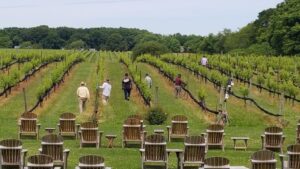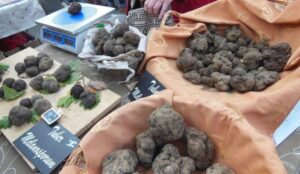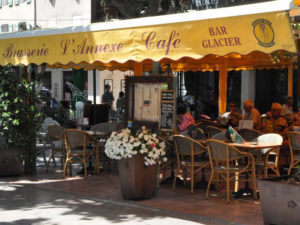Power Tasting has written before about the perils of wine snobbery. It’s an affront to politeness and often to the people in front of whom the snob is showing off. But conversing about wines with friends and acquaintances who are knowledgeable about wine is a pleasure that should not be avoided either. In fact, with a certain circle of our friends, we know that every get-together is going to include discussions about wine.
Photo courtesy of Skurnick Wines & Spirits.
No one is trying to one-up the other. Still, we can drop phrases like “a high degree of malo*” into conversation and know that we will be understood. It is fascinating to sit around a dinner table and hear others expressing their opinions about aromas and tastes, some of which each person agrees with and others that lead to statements like, “Are you sure we’re drinking the same wine?” We trust our own senses and have faith in those of our friends, so such a discussion is informative, not confrontational.
There are particular lessons to be learned when one person is particularly familiar with a specific wine or wines from lesser known grapes or regions. We, for instance, can speak knowledgeably about Quebecois dessert wines, since we spend a fair amount of time in the Quebec province. And if someone else can compare them with, say, ice wines from Ontario or Germany, so much the better.
A few problems can arise when the conversation drifts towards wines. If everyone in the room has a roughly equivalent degree of knowledge, that’s okay. But it does risk slipping into rather boring discussions after a while. This is even more the case if not everyone is at the same level or, even worse, some don’t really care about wine at all. By comparison, imagine being in a room full of Yankee fans and not only you don’t root for the Bombers, but you don’t know left field from first base. The line between knowledge and snobbery is a fine one and might differ depending on the observer.
The way to make a wine conversation more amenable for everyone is to avoid specialist terminology and talk about one’s own impressions. Many people are in the dark when someone says that a wine evokes, say, warm buttered toast. But when those same people are offered two wines from the same grape and asked to dig down a bit to differentiate them, their taste buds go to work.
If, for example, they are offered a California Chardonnay and a Chablis, they may be astonished to find out that they’re made from the same grape. When asked what makes one smell and taste different from the other, they may bring up words like butter, apples and oak. This puts everyone on the same plane. We’ve known beginners who have tasted something subtle that the experienced wine people, attuned to what is supposed to be in a type of wine, have overlooked.
* It means that the wine has undergone a lengthy second malolactic fermentation, which turns rather austere malic acid to buttery lactic acid.





